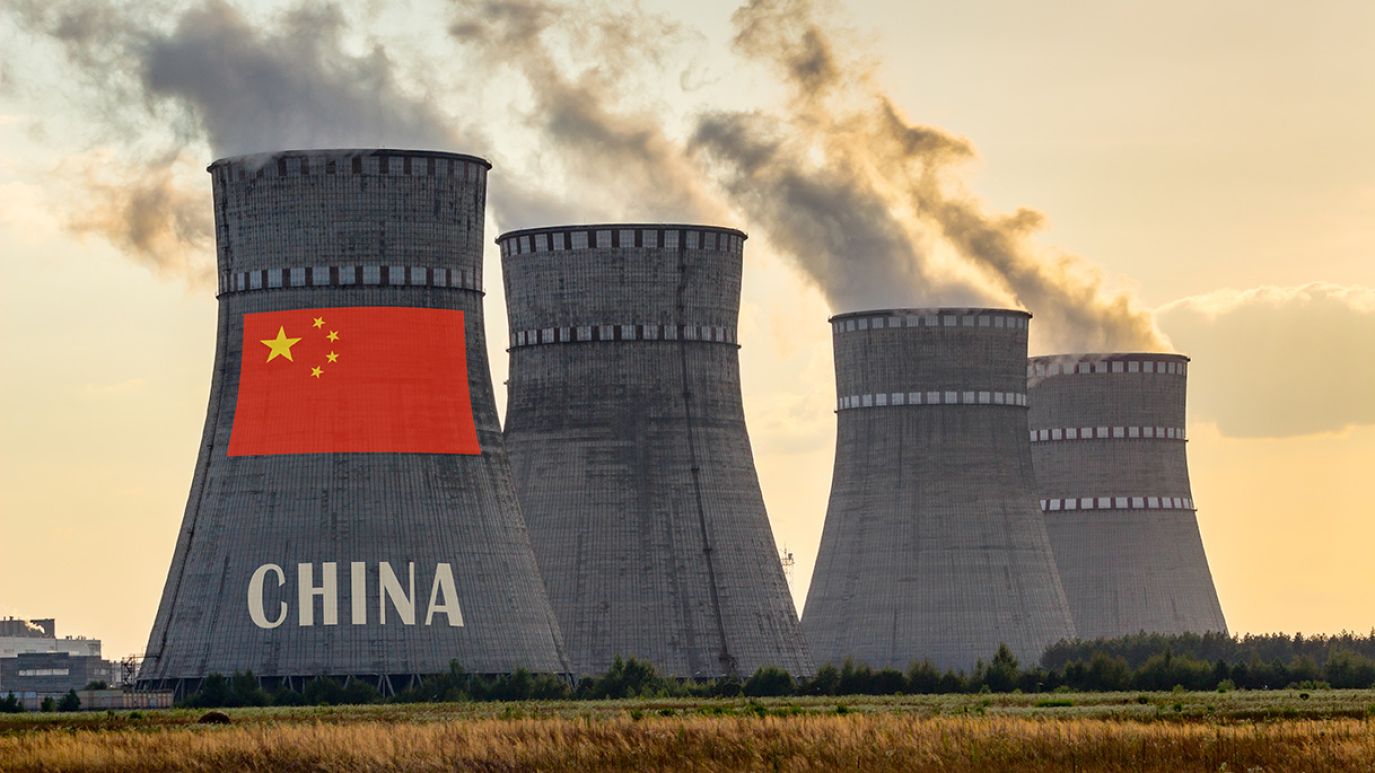
Where does China’s rapid nuclear development place it in relation to the historical lead of the United States?
Last month, Chinese premier Li Qiang approved just over $33 billion in funding for the construction of 11 new nuclear reactors in five coastal provinces. This approval is representative of Beijing’s general push in recent years toward decarbonization of its energy industry. Nuclear buildout has been a primary focus of this push ever since the 14th Five-Year Plan (2021-2025) projected a goal of building 150 new reactors in 15 years.
China’s clean energy efforts are strategic not only environmentally but geopolitically. Fossil fuel dependence puts a significant damper on China’s goals of economic self-sufficiency, and China remains the world’s largest coal consumer and second-largest oil consumer.[1]
The drastic expansion of China’s nuclear industry, together with its extensive investment in solar and wind power in recent years, shows China to be a global power taking seriously the range of motivations to diversify its energy.
The current global leader in nuclear energy facilities is the US, with 94 operational nuclear reactors (total capacity 102 GW) to second-place China’s 58 (total capacity 58 GW) and third-place France (with two less operational reactors but a greater total capacity – 64 GW – than China).[2]
But China’s rapid rate of buildout challenges the US’s position. According to Global Energy Monitor’s July 2024 data, there were already 30 pre-operational nuclear reactors under construction in China prior to Premier Li’s latest approval of 11. That number is zero for the US and one for France. The country with the second-highest number of nuclear units under construction, India, has seven reactors underway.[3]
China’s rate of nuclear progress is outstanding not only in the frequency of new projects started but in the rapidity of the construction process itself. A June 2024 report published by the Information Technology & Innovation Foundation (ITIF) notes that “nearly every Chinese nuclear project that has entered service since 2010 has achieved construction in seven years or less,” [4] far outstripping more conventional construction timelines of at least ten years.[5]
In the US, the licensing process for nuclear unit construction is so layered in red tape and upfront costs as to be inhibitive for many players in the field. Given current projections of nuclear facility construction by the US and China, the latter is set to surpass the former by 2030.[6]
The US has not left China’s nuclear progress entirely unanswered, however. The bipartisan ADVANCE Act, signed into law this July, addresses some of the factors that many players in US energy have found inhibitive to nuclear reactor construction. For instance, the act aims to make the U.S. Nuclear Regulatory Commission’s (NRC) licensing process both cheaper, by mandating lower license application fees, and faster, by increasing NRC staffing devoted to application review.[7]
The Global Energy Monitor’s July 2024 data tallies five US nuclear units in pre-construction phases and 25 more prospective units announced. For a country that has produced only two new nuclear units in the last decade, [8] this may be an indication of an upcoming change of pace.
As these prospective units approach construction phase, it remains to be seen to what extent this legislation will catalyze the US nuclear industry, and which global superpower – the US or China – will emerge as the long-term leader in nuclear energy.
China’s ability to quickly mobilize players in its nuclear industry – as well as all sectors of its national economy – for geopolitically advantageous purposes renders it a unique market landscape for foreign businesses to navigate.
Pamir’s expertise on the unique fusion of Chinese economy and politics provides clients with insight and practical advice for business strategy in this environment.
Visit our website’s About Us and Contact pages for further information about the tailored services we offer.
[1] https://www.energyinst.org/__data/assets/pdf_file/0006/1542714/684_EI_Stat_Review_V16_DIGITAL.pdf
[2] https://globalenergymonitor.org/projects/global-nuclear-power-tracker/ ; see Global Energy Monitor’s Summary Data here, last updated July 2024 as of this writing: https://docs.google.com/spreadsheets/d/1vRUaiJQkIJjkFWIUbJnApJaJMOLMxeNmITWX_4wRHb8/edit?gid=362444400#gid=362444400
[3] Ibid.
[4] https://itif.org/publications/2024/06/17/how-innovative-is-china-in-nuclear-power/#
[5] https://thebreakthrough.org/issues/energy/chinas-impressive-rate-of-nuclear-construction
[6] https://itif.org/publications/2024/06/17/how-innovative-is-china-in-nuclear-power/#
[7] https://www.energy.gov/ne/articles/newly-signed-bill-will-boost-nuclear-reactor-deployment-united-states#:~:text=The%20ADVANCE%20Act%20directs%20the,can%20award%20to%20incentivize%20deployment.
[8] https://itif.org/publications/2024/06/17/how-innovative-is-china-in-nuclear-power/#
China’s 5G influence in developing economies
China’s Belt and Road Initiative and its digital counterpart, the Digital Silk Road, threaten to displace US telecom and tech companies in developing economies in Africa, Latin America and the Middle East. How can US operators and network providers stand up to the challenge?